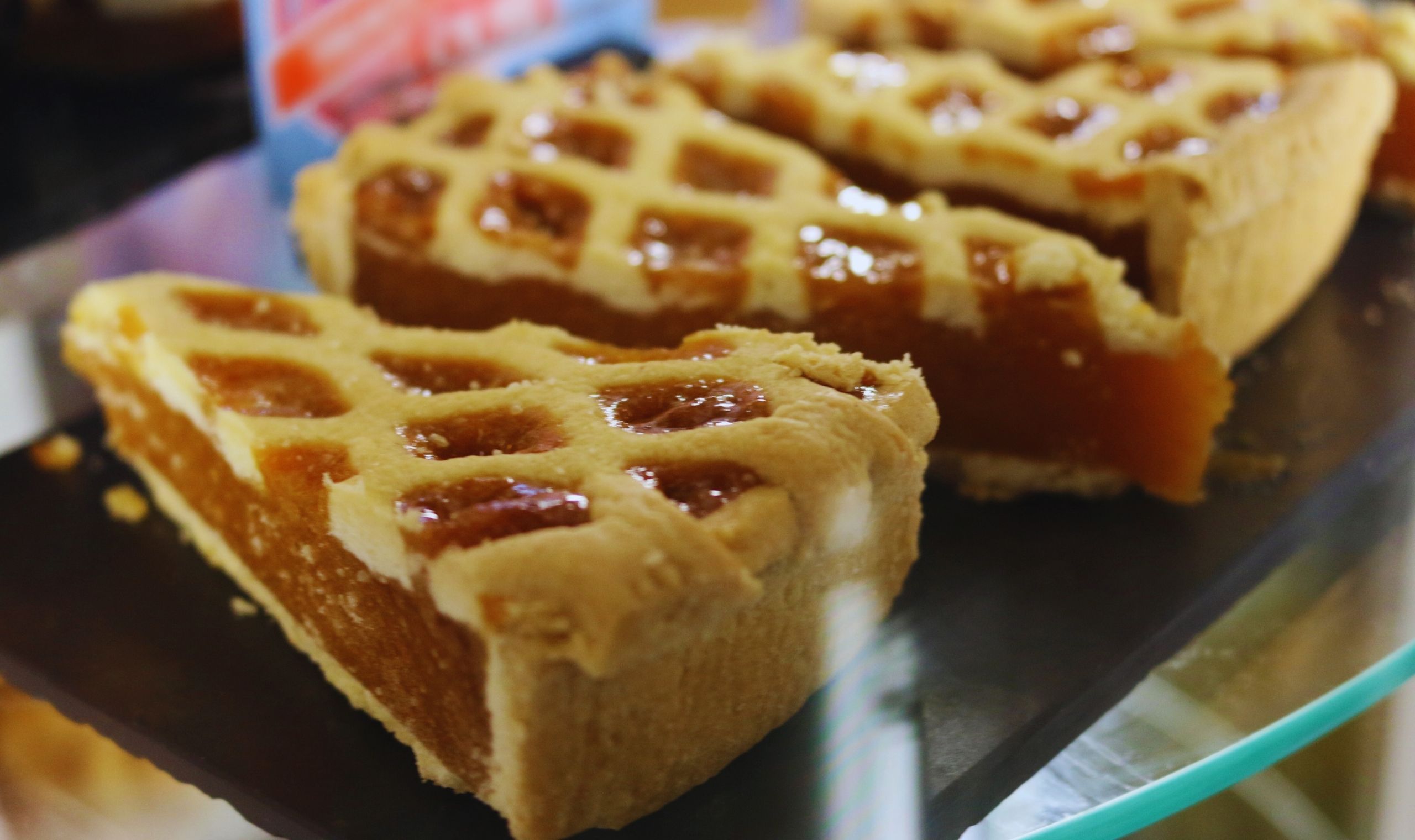Anko Pie: Japan’s Sweet Red Bean Delight
The Sweet Origins of Anko
Anko, the quintessential sweet red bean paste, has a rich history that dates back centuries in Japan. Its origins can be traced to the Heian period (794-1185), during which it is believed that the demand for sweet treats prompted the introduction of red beans, particularly azuki beans. These beans were initially cultivated in China, and from there, they made their way to the Japanese archipelago, where they were embraced for their versatility and nutritional benefits.
Over the years, anko underwent significant transformations, evolving from a simple ingredient to a beloved staple in Japanese confectionery. The traditional preparation of anko involves boiling adzuki beans until they become tender, followed by the addition of sugar. This method not only enhances the natural sweetness of the beans but also allows the paste to take on a smooth, rich texture. Two primary variations of anko have emerged: koshi-an, which is smooth and creamy, and tsubu-an, which is chunky, allowing for a more textured experience. Both forms of anko play crucial roles in numerous traditional sweets, from mochi to dorayaki, showcasing the ingredient’s versatility.
The cultural significance of anko is evident in various seasonal and festive sweets crafted during significant occasions. These confections are often tied to Japanese traditions, symbolizing prosperity and good fortune. The meticulous methods of crafting anko have been passed down through generations, with artisans employing time-honored techniques that remain unchanged. While modern technology has facilitated mass production, many traditional sweet makers still prioritize quality and authenticity, relying on slow-cooking methods to achieve the desired flavors and textures.
As a result, anko is not just a simple indulgence; it holds a cherished place within Japanese culture. Its historical journey and the enduring practices surrounding its preparation reflect Japan’s deep-rooted appreciation for culinary arts, making it an essential component of the country’s gastronomic heritage. This evolution continues to resonate with both locals and visitors, ensuring that anko remains a prominent feature in Japan’s rich tapestry of culinary delights.
A Brief History of Anko Pie
Anko pie, a delectable Japanese confection, represents a fascinating fusion of traditional and modern culinary practices. Its origins can be traced back to the rich history of anko, or sweet red bean paste, which has been a staple in Japanese cuisine for centuries. Traditionally, this ingredient was made by boiling azuki beans and sweetening them with sugar, leading to various desserts such as dorayaki and taiyaki. The incorporation of anko into pies began to emerge in the late 19th century, following Japan’s exposure to Western cuisine during the Meiji Restoration.
The Meiji era marked a significant shift in Japanese culinary practices, as the influence of Western desserts began to gain traction. With the introduction of Western baking techniques and ingredients, skilled Japanese chefs started to experiment by integrating traditional elements with Western styles. This eventually led to the conception of anko pie, a pastry that marries the buttery crust of Western pies with the sweet, rich flavor of azuki bean paste. Such innovation not only highlighted the versatility of anko but also allowed it to become a beloved treat among locals and visitors alike.
The Joking Side of Anko Pie: Light-hearted Humor
Anko pie, a beloved dessert in Japan, not only captivates taste buds but also inspires humor and joy among its enthusiasts. The delightful blend of sweet red bean paste encased in a flaky crust represents more than just culinary excellence; it has become a source of amusement in social settings. Food culture in Japan is often intertwined with humor, providing a playful backdrop to daily interactions. For instance, one might jokingly say, “Why did the anko pie refuse to play cards? Because it was afraid of getting filled with bluff!” Such light-hearted jokes encapsulate the joy of eating anko pie and highlight its significance in bringing people together.
The jovial spirit surrounding this dessert can be further illustrated through amusing anecdotes shared during gatherings. Imagine a family reunion where, upon serving anko pie, one relative quips, “This is definitely my ‘bean’ of choice!” Laughter follows as everyone savors the dish, creating unforgettable moments rooted in camaraderie and fun. These playful exchanges reflect how humor often complements culinary experiences in Japan, making delicious treats like anko pie even more enjoyable.
Anko Pie Recipes to Savor
Exploring the delectable world of Anko pie allows both novice and seasoned bakers to appreciate this Japanese treat. Below are a few recipes that highlight traditional and contemporary takes on Anko pie, ensuring a delightful experience in every bite.
Classic Anko Pie
Ingredients:
– 1 cup anko (sweet red bean paste)
– 1 pre-made pie crust
– 1 egg (for egg wash)
– Powdered sugar (for dusting)
Instructions:
1. Preheat your oven to 350°F (175°C).
2. Roll out the pie crust on a lightly floured surface and place it in a pie pan.
3. Spread the anko evenly on the crust, ensuring a thick layer for an enjoyable taste.
4. Cover with a second layer of pie crust, sealing the edges. Cut a few slits in the top to allow steam to escape.
5. Brush the top crust with the beaten egg for a golden finish.
6. Bake in the oven for about 30-35 minutes or until golden brown.
7. Let it cool slightly before serving. Dust with powdered sugar for an elegant touch.
Matcha Anko Pie
This adaptation offers a unique twist by incorporating matcha green tea, adding an earthy flavor to the dessert.
Ingredients:
– 1 cup anko
– 1 cup all-purpose flour
– 1 tablespoon matcha powder
– 1/2 cup cold butter (cut into cubes)
– 1/4 cup sugar
– 1 egg (for glaze)
Instructions:
1. Preheat the oven to 350°F (175°C).
2. Combine flour, matcha powder, and sugar in a bowl. Add cold butter and mix until crumbly.
3. Form the mixture into a dough and refrigerate for 30 minutes.
4. Roll out the dough, place half in a pie dish, and spread anko evenly.
5. Cover with the remaining dough, seal and glaze with beaten egg.
6. Bake for 30 minutes until golden. Allow to cool and then serve.
These delightful Anko pie recipes not only highlight the versatility of the sweet red bean filling but also invite creativity in adding flavors or textures. Feel free to explore variations, such as incorporating nuts or other seasonal fruits to personalize your pie and make it a true reflection of your taste.
Where to Find Anko Pie in Japan
When exploring the rich landscape of Japanese confections, anko pie stands out not only for its taste but also for its intriguing presence in various regions across Japan. This delightful pastry, filled with sweet red bean paste, can be found in numerous establishments, making it accessible to both locals and tourists alike.
One of the best places to sample anko pie is at traditional tea houses. These venues often serve unique iterations of the pastry, integrating seasonal ingredients that reflect local culture. The serene atmosphere of a tea house enhances the experience, allowing guests to enjoy their anko pie alongside a cup of matcha or hojicha.
Another excellent option is renowned bakeries, particularly in urban centers like Tokyo and Osaka. Famous establishments such as Kimuraya in Tokyo have gained a reputation for their high-quality anko pie, blending traditional methods with contemporary flavors. Travelers in search of authentic pastries should consider visiting local bakeries where artisans handcraft these delicacies, offering a selection that differs from one region to another.
Participating in regional festivals provides yet another opportunity to enjoy anko pie. Events like the Anko Festival in Yamagata showcase dishes featuring red bean paste, and vendors often sell their own versions of anko pie. Engaging with local festivities not only allows for the tasting of this treat but also provides insight into the culture surrounding it.
Travelers are advised to inquire about anko pie at restaurants specializing in Japanese sweets or during guided food tours, which often include stops at hidden gems. Engaging with locals can also yield recommendations, unveiling lesser-known spots that serve exceptional anko pie.
Incorporating these practices into your culinary journey through Japan ensures a delightful experience tasting anko pie and appreciating the cultural significance behind this cherished delicacy.
The Cultural Significance of Red Bean Paste
Red bean paste, known as “anko” in Japan, embodies much more than a mere ingredient; it holds profound cultural significance within Japanese cuisine. This versatile paste, made primarily from adzuki beans, serves as a staple in a myriad of traditional dishes and desserts, extending its reach far beyond the beloved anko pie. In fact, it is an integral component in various confections, such as mochi, dorayaki, and yokan, thereby playing a crucial role in the tapestry of Japanese sweets.
The utilization of red bean paste transcends everyday indulgence, intersecting with numerous cultural practices and celebrations. During festivals like Matsuri, sweet treats infused with anko emerge as essential offerings, symbolizing prosperity and good fortune. For instance, ” sekihan,” a celebratory rice dish often enjoyed during auspicious events, incorporates red beans to convey themes of joy and togetherness. This practice illustrates how red bean paste is interwoven into the fabric of communal life, fostering connections and shared experiences among family and friends.
Beyond its presence in festive occasions, red bean paste occupies a cherished space in the daily lives of many Japanese individuals. It often accompanies tea ceremonies, serving as a complement to matcha or other teas, and is found in cafes and bakeries across the country. Its distinct texture and flavor evoke nostalgia, reminding many of childhood memories and family gatherings. Additionally, red bean paste’s natural sweetness and nutritional properties contribute to its acceptance as a healthier alternative to more heavily processed sweets, reflecting a growing awareness of diet and wellness within modern Japanese society.
In essence, the significance of red bean paste like anko in Japanese culture is multifaceted. It embodies traditions, reflects community values, and resonates with personal experiences that many individuals cherish, ensuring its place as a symbol of comfort and celebration.
Health Benefits of Anko
Anko, a traditional Japanese sweet made from adzuki beans, offers a variety of health benefits that make it a favorable alternative to conventional sweeteners. One of the primary advantages of anko is its high fiber content. Unlike many refined sugars, anko retains the natural fibers found in adzuki beans. These fibers are instrumental in promoting digestive health, aiding in regular bowel movements, and potentially lowering the risk of various gastrointestinal issues. Additionally, fiber contributes to a feeling of fullness, which can be beneficial for those looking to manage their weight.
Moreover, anko provides a natural source of energy. The carbohydrates present in anko, particularly the complex carbohydrates found in adzuki beans, are absorbed slowly by the body, providing sustained energy without the abrupt spikes often associated with refined sugar consumption. This attribute makes anko an excellent option for athletes or individuals engaging in physical activities, as it can help maintain energy levels over extended periods.
Incorporating anko into a balanced diet is relatively easy due to its versatility. It can be used as a sweetener in various recipes, such as desserts, and even in savory dishes. This adaptability can encourage a more health-conscious approach to sweet treats and family meals alike. However, it is essential to consider individual sensitivities when consuming anko. People who are sensitive to legumes might experience gastrointestinal discomfort or allergic reactions when consuming adzuki beans. Additionally, those monitoring their sugar intake should be mindful of portion sizes, as anko does contain natural sugars. In summary, anko serves not only as a delightful dessert option but also as a functional component of a health-oriented dietary plan. Its rich nutritional profile positions it as a wholesome and enjoyable alternative to more conventional sweeteners.
Modern Takes on Anko Pie: Innovative Trends
Anko pie, a beloved traditional Japanese dessert, is experiencing a resurgence as modern chefs and home bakers seek to innovate while preserving its rich cultural heritage. One notable trend is the fusion of anko pie with flavors and techniques from various global cuisines. For instance, some bakers are incorporating spices such as matcha or even chocolate into the classic sweet red bean filling, creating a delightful juxtaposition of flavors that appeals to both traditionalists and adventurous eaters alike. This fusion not only introduces Japanese elements to international desserts but also introduces anko pie to diverse palates.
Additionally, contemporary adaptations of anko pie are increasingly mindful of dietary preferences and restrictions. As more individuals embrace veganism or gluten-free diets, chefs have begun to reinterpret this classic treat to accommodate these needs. By using alternatives such as almond or coconut milk for custard and gluten-free flour for the crust, bakers can create a version of anko pie that remains true to its essence while catering to a broader audience. These variants do not compromise the flavor that defines the original; rather, they enhance its accessibility, ensuring that everyone can experience this Japanese delight.
The experimentation does not stop there. Some modern takes on anko pie highlight creative presentation methods, transforming these traditional pastries into visually appealing desserts ideal for social media sharing. Individual-sized servings, tartlets, and even anko pie-inspired cakes are becoming popular in cafés and bakeries worldwide. These creative renditions showcase not only the versatility of anko as a filling but also the ingenuity of contemporary bakers who strive to keep this iconic dessert relevant in a rapidly evolving culinary landscape. Overall, the current trends in anko pie reflect a beautiful blend of tradition and modernity.
Anko Pie: A Dessert for All Occasions
Anko pie, a delightful confection originating from Japan, has established itself as a beloved dessert across various occasions. Its versatility makes it suitable for both casual snacking and more formal celebrations. Often enjoyed with a warm cup of green tea, anko pie can serve as a comforting treat during everyday moments or elevate the atmosphere of gatherings and festivities.
The unique appeal of anko pie lies in its compatibility with diverse accompaniments. It can be paired with whipped cream, ice cream, or even fresh fruits, allowing for a personalized touch that caters to individual preferences. Additionally, garnishes such as edible flowers or seasonal fruits can enhance its presentation, making it visually captivating. The aesthetic aspect is particularly significant in Japanese culture, where the appreciation of beauty in food presentation is paramount. By adjusting presentation styles, anko pie can seamlessly transition from a homey snack to an elegant dessert centerpiece.
Seasonality plays a crucial role in anko pie offerings throughout Japan. Depending on the time of year, local ingredients and flavors may influence the creation of artisanal variations. For instance, during spring, sakura (cherry blossom) flavors may be incorporated, while autumn could bring the richness of chestnuts. This adaptability not only showcases regional specialties but also ingrains the dessert into seasonal festivities. Events like Hanami (flower viewing) in spring or Tsukimi (moon viewing) in autumn often feature anko pie, highlighting its significance in Japanese culinary traditions.
In conclusion, anko pie stands as a versatile dessert cherished for its ability to fit seamlessly into various occasions. Its skillful blending of tradition, seasonal elements, and creative pairings enhances its desirability, making it a delightful choice for all kinds of celebrations.



